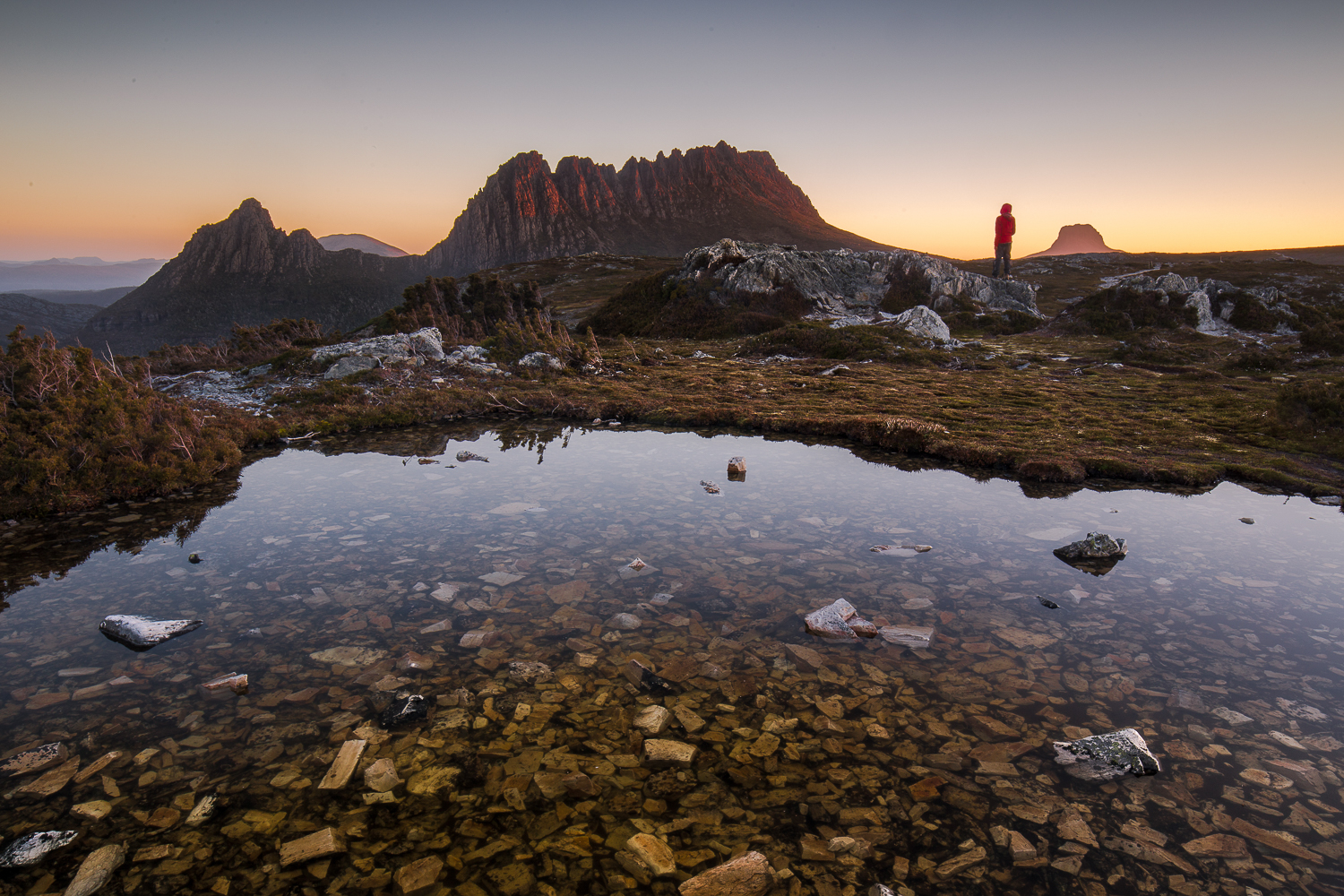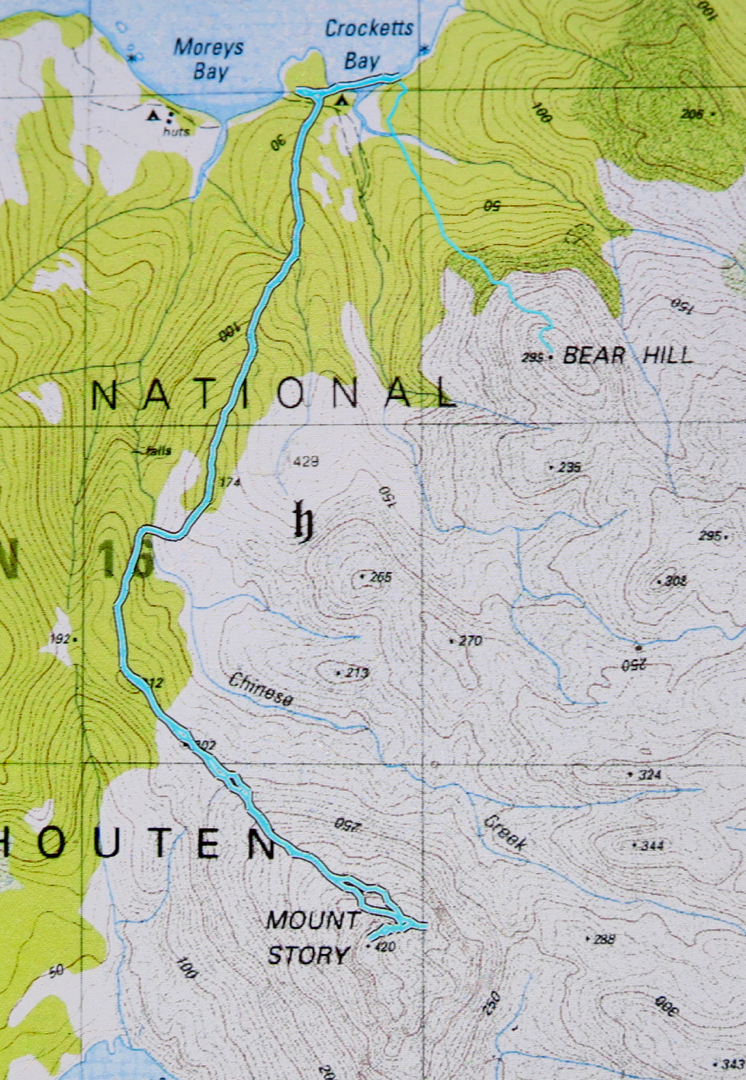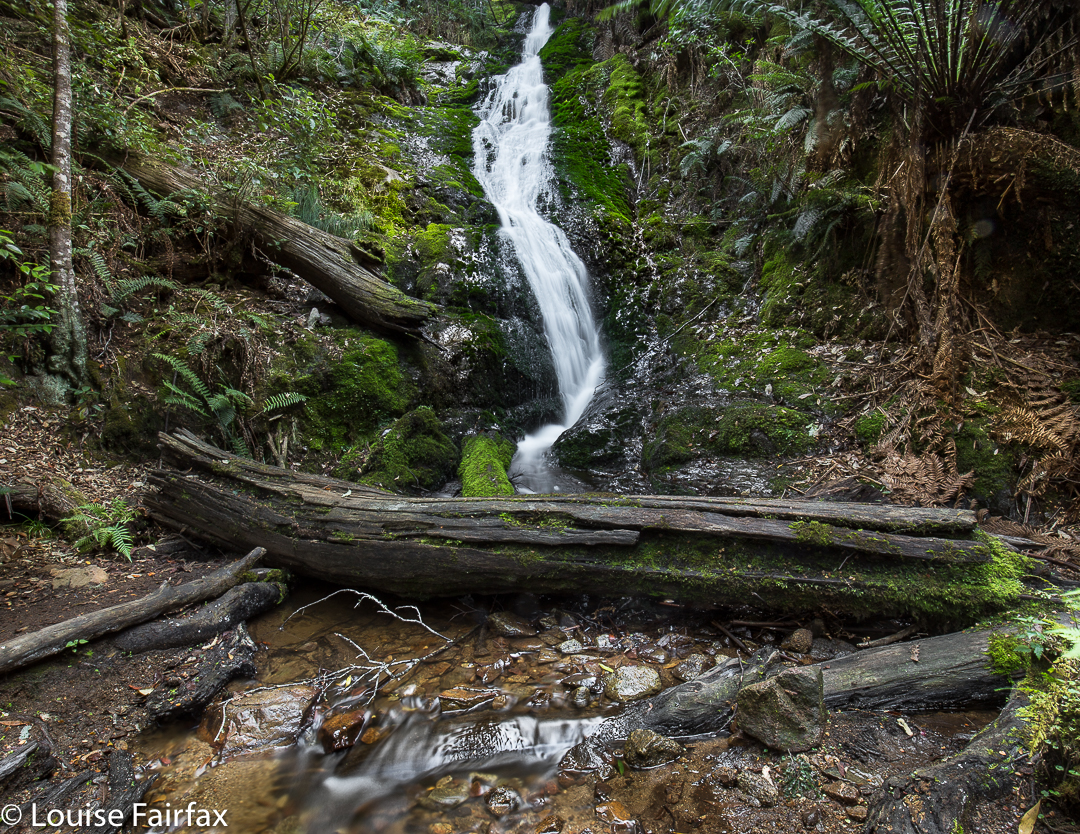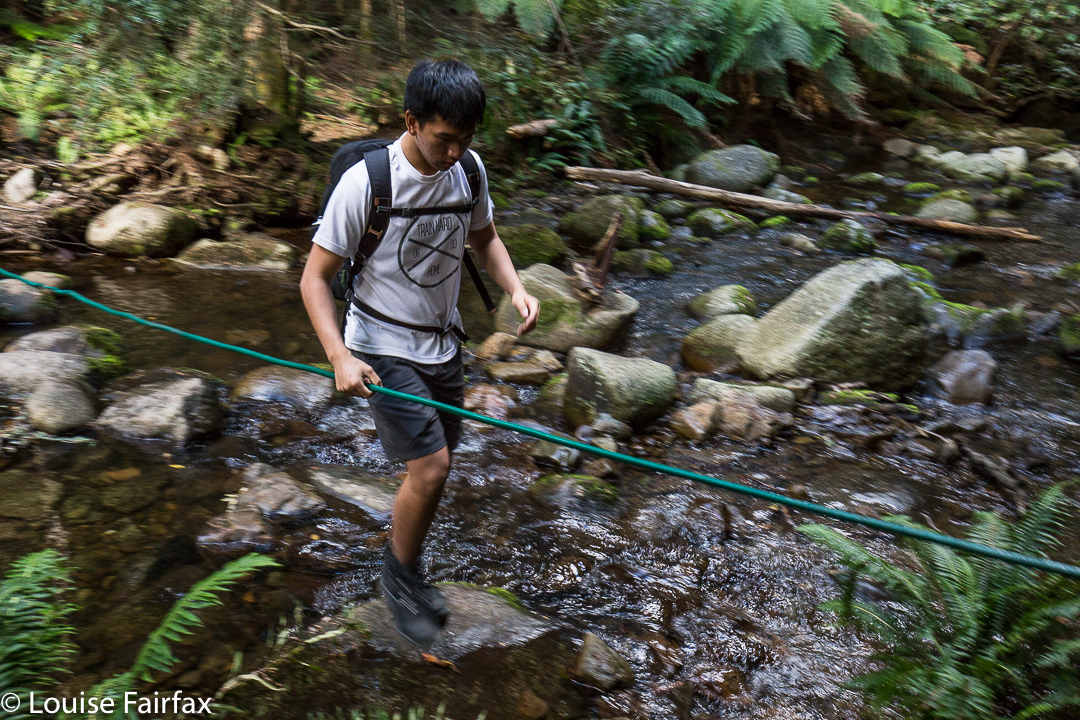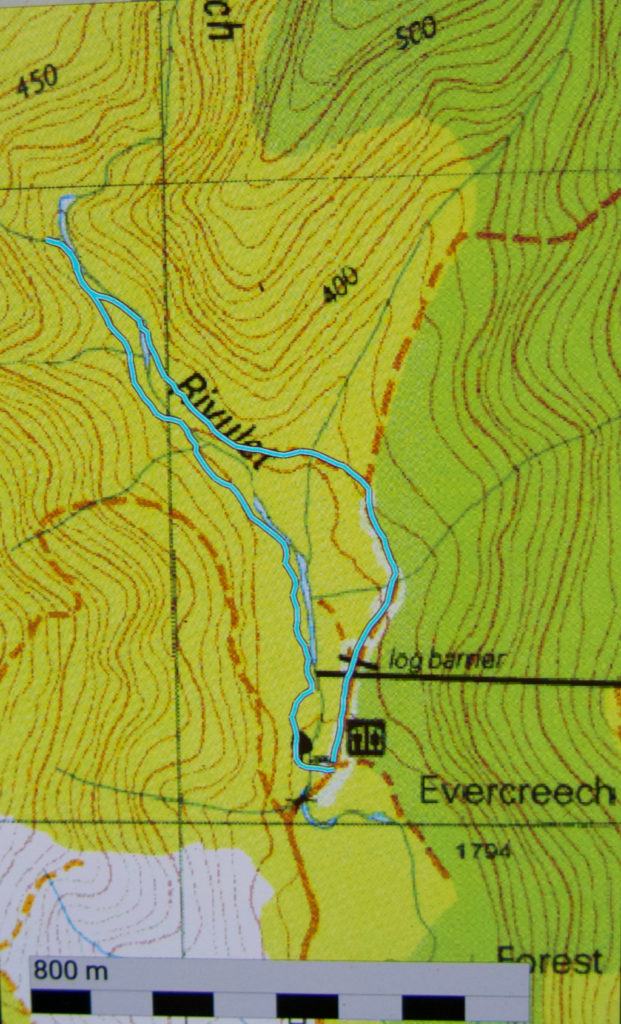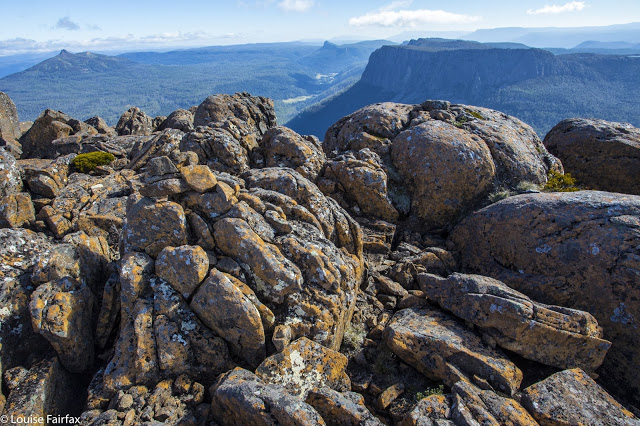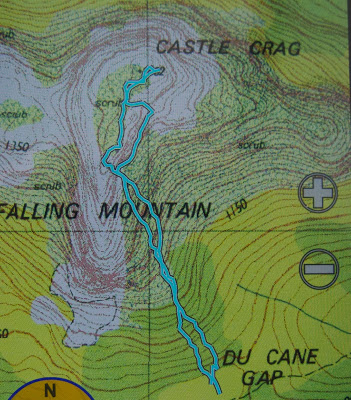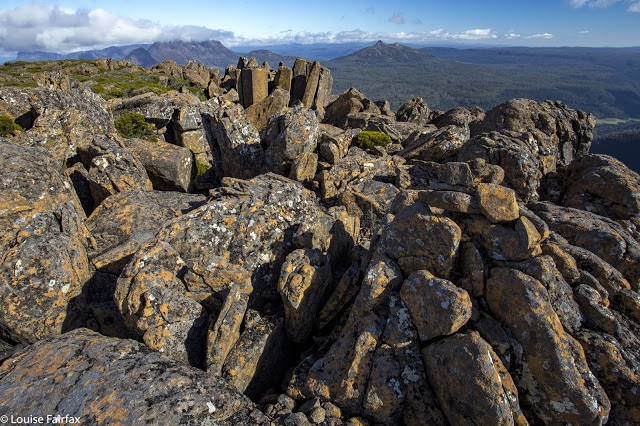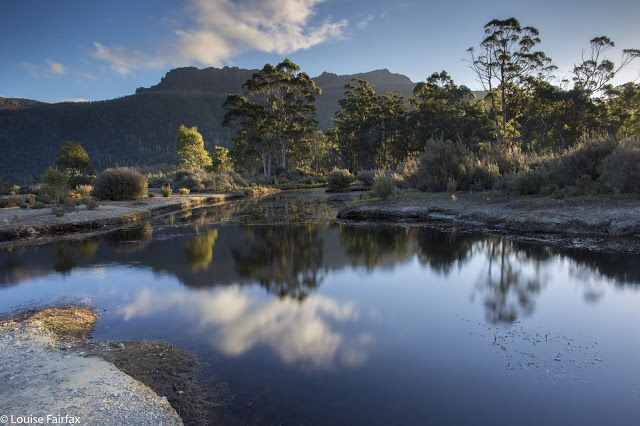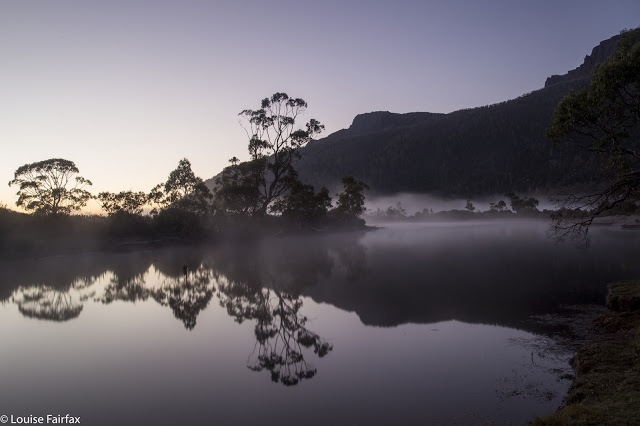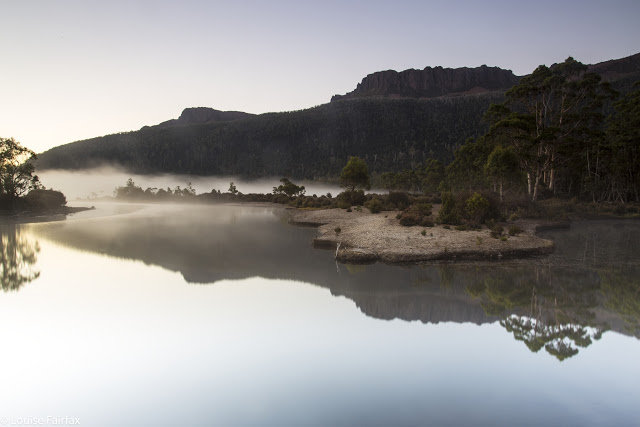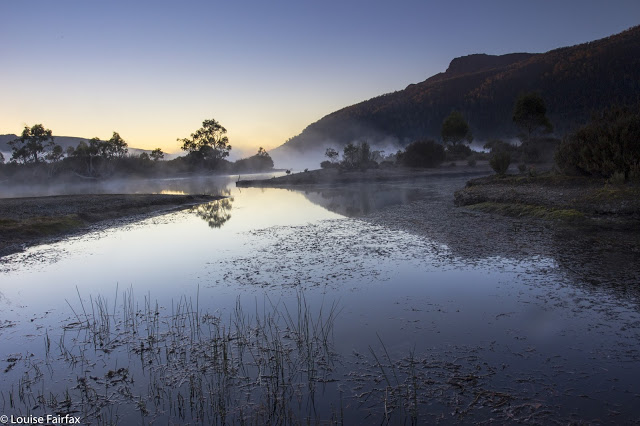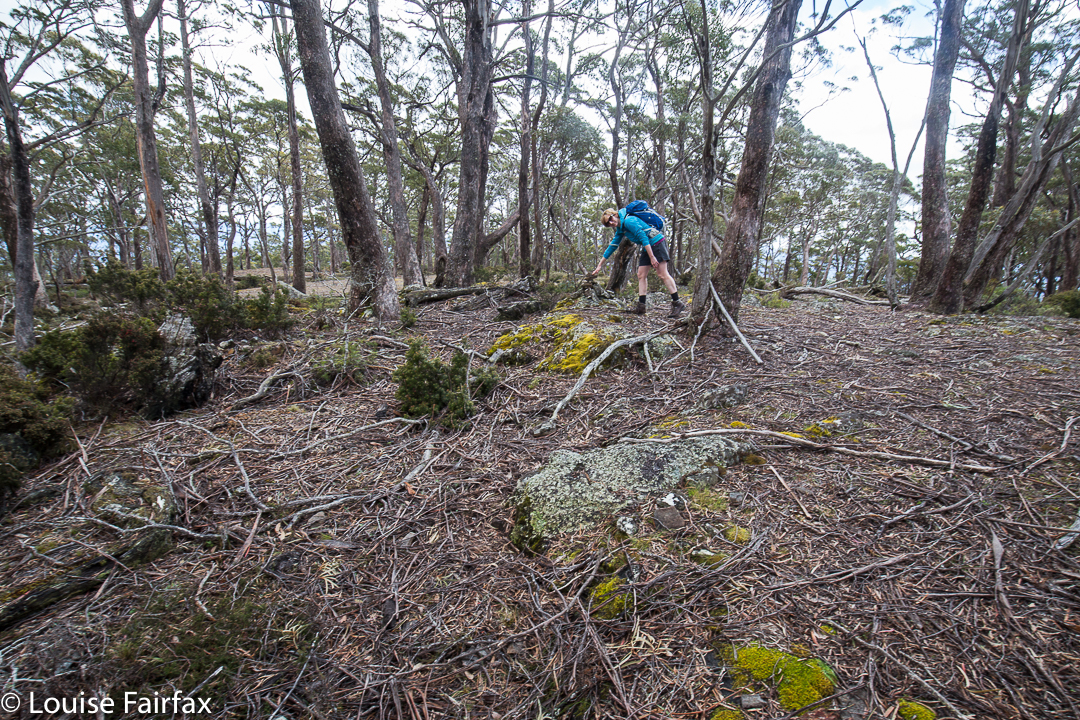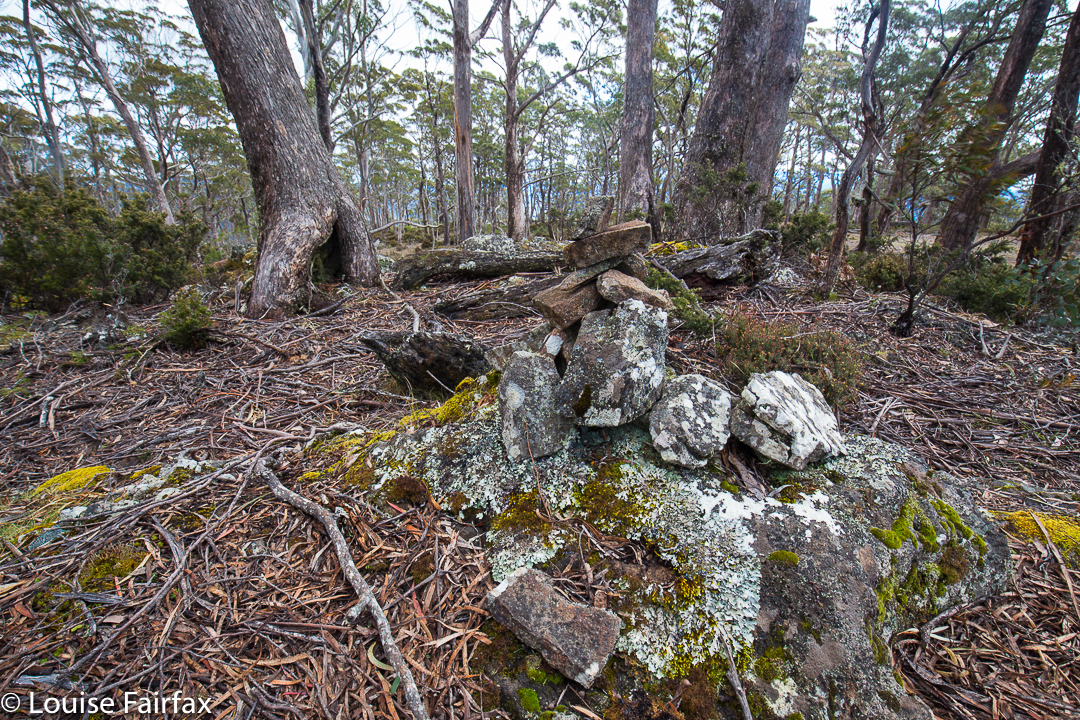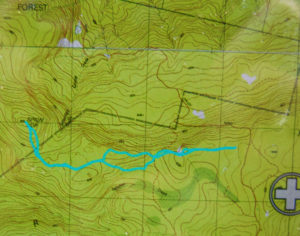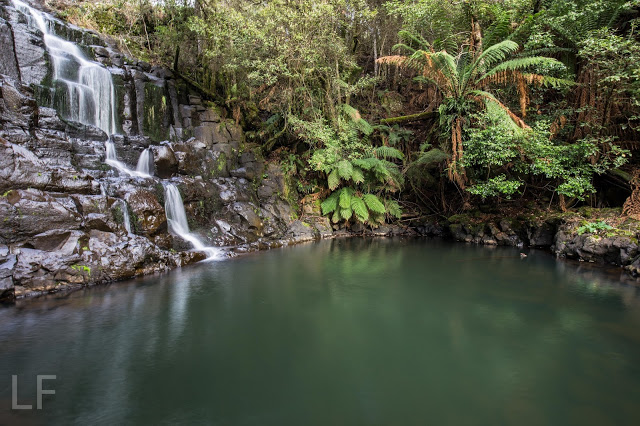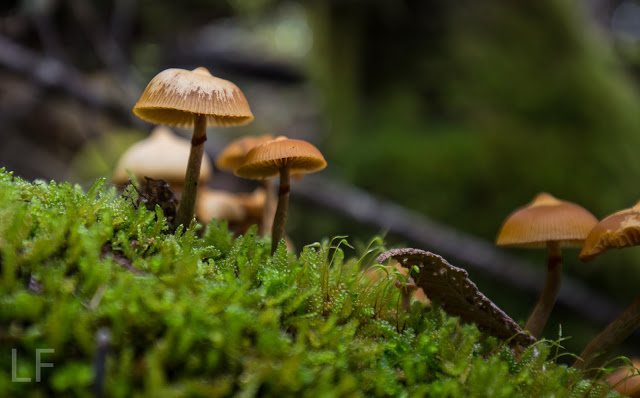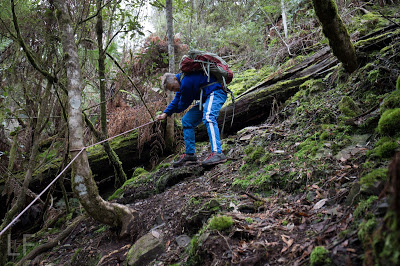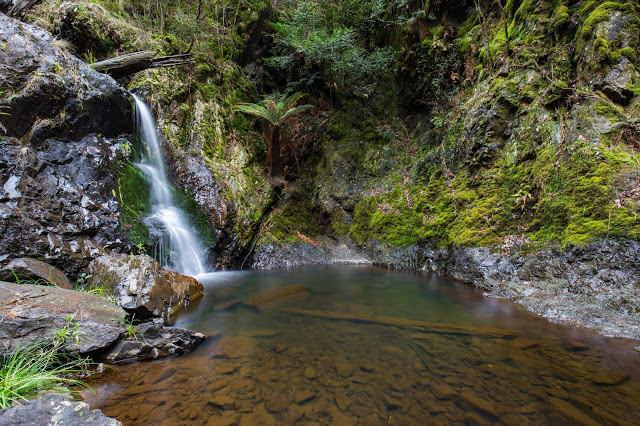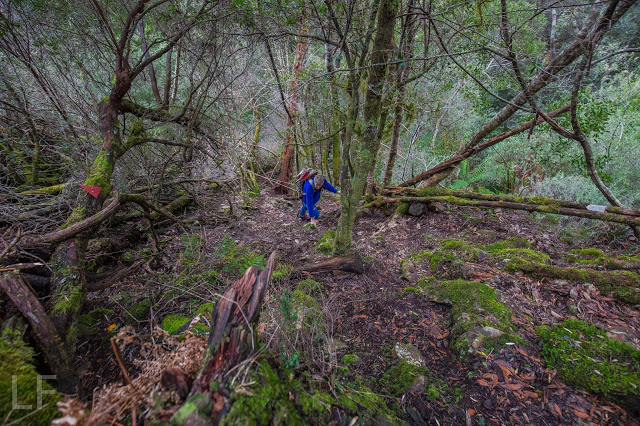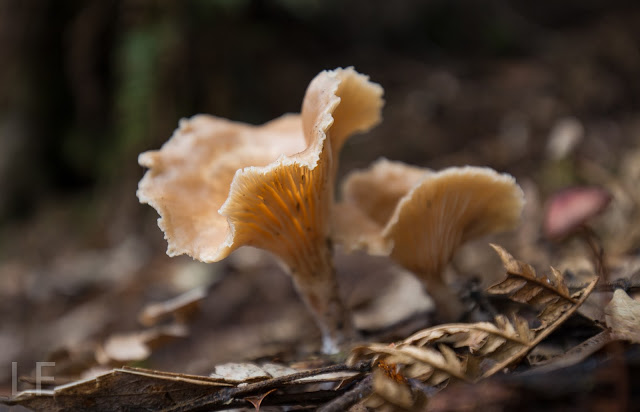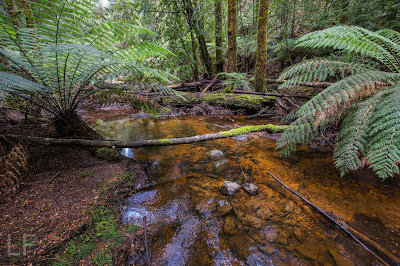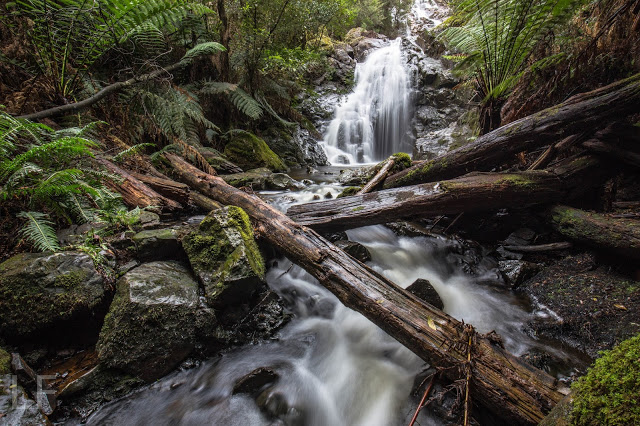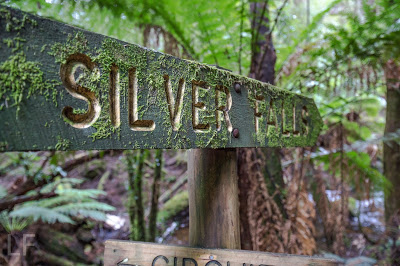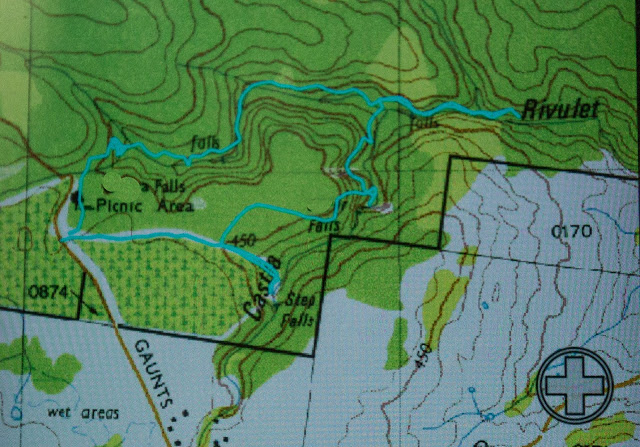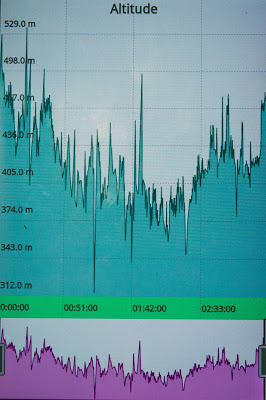Castro Circuit: Step Falls, Castra Falls, Silver Falls and more. Jun 2016
First Falls on the list: Step Falls. Very steep and slippery.
The forecast was for developing rain. My friends had all reneged on climbing a mountain: time for a waterfall walk with the last brave man left standing, my husband. There are so many amazing and wonderful waterfalls in the north of Tasmania, it’s rather hard to choose, but I selected the Castra Falls circuit, as what I had read suggested it would take about three hours, and that seemed a good walk to drive ratio. As it was, we only did one and a half hours’ walking – but used up that amount again taking photos :-). I could have taken a whole lot more (requiring even more time), but felt guilty at forcing my husband to watch the less than interesting activity of his wife motionless behind her tripod going click, or lying in the mud adoring tiny fungi – possibly more amusing than the tripod option, but still lacking in spectator excitement.
From our very first steps, we loved this walk. Fungi were everywhere, but this was a waterfall walk, so I tried to ignore these delicate beauties, and left my macro lens in the bottom of the pack so as to not be even more boring by changing lenses the whole time. Oh the shame of it all, but I did admire them anyway as I walked past.
There were masses of fungi – best catch this year.
Well, I did say I admired them en passant. I decided I could photograph them with my wide-angle lens and that would not take up so much time.
My husband using the safety rope on the way down to Castra Falls, the second Falls on the circuit
We both got a bit of a shock going to, and being at, Step Falls. The notes we read said it was very steep. I usually assume such advice will be overstated, but in this case, it was right, and I was glad there were saplings to brake downward progress a little. At the bottom, the rocks were the slimiest, slipperiest rocks imaginable, and I felt clumsy on them with precious camera around my neck, bag of filters on my shoulder, tripod in hand … whoops, slide. Balancing on them was hopeless. I don’t know if they’re always like that, but in today’s conditions, I didn’t attempt any fancy angles; survival was the key.
The second falls on the list, the Castra Falls, had a rope to hold, which Bruce greatly appreciated. (All these Falls are done as side routes from the main circuit, as I hope my map at the end makes clear.)
Castra Falls, the second falls on the circuit.
Climbing back up from the Castra Falls
More beautiful fungi
The Castra Cascades were pleasant enough, but not as beautiful as the many river scenes along the way, … and very shortly after that, we were at the junction of the Castra Rivulet we had been following, and Nietta Creek, which we were about to pursue. We’d been exercising for a total of 45 minutes at this stage (which included side trips, but not photos). This was a really pretty spot with a kind of beach – perfect for lunch. I ate hurriedly, as I wanted to explore a track that went off to the right here, to what was called a “Secret place”. I was unsure about where it went and what it was, as, unlike the other side routes, it gave no time estimation. I left Bruce quietly eating and set off along the steep banks on my mystery journey. After 16 minutes, the tapes seemed to have run out, and even if they hadn’t, I felt my time had. The scene below was what I found. I photographed just with hand-held camera on 1/10th second, as I feared Bruce might be getting cold and wondering what on earth his wife was up to. No longer wondering the whole time if this was the secret place, or this, I moved more quickly, and was back at the junction in 11 minutes.
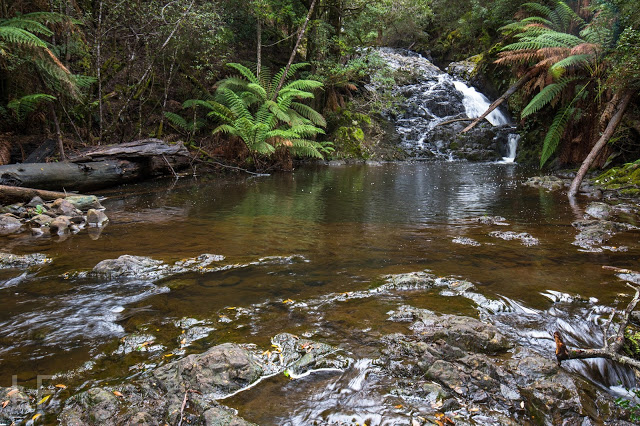
I have thus called these the “Secret Place Cascades”. If someone wants to tell me their real name, I’d be most grateful.
From the junction, the beautiful Nietta Creek is followed upstream until Silver Falls are reached. This part of the route is wonderful, as you are right beside the stream the whole way.
Nietta Creek
The side track to Silver Falls is the tiniest deviation from the circuit, and this was my favourite of the Falls. Another short but steep push and the top was reached.
Silver Falls, falls number three
signage
We had parked the car at the second entrance to the forest, maybe two hundred metres from the first, but the other side of the rivulet, in case the stream was flooded. As you can see from the photo below, it wasn’t, so we completed the circuit in the forest and were soon back at the car. (If the water is high, you can do this tiny stretch on the road.)
Apparently this beautiful circuit was destroyed in a huge storm a few years back, but has now been repaired by local volunteers, to whom go my heartfelt thanks. The tapes and path are clear, signage is fantastic, but, better than that, it remains a real bushwalk and not one of these wretched manicured tourist highways. You do have to concentrate a little; you can fall over or trip, you need to look for the next tape and use your brain a tiny bit. The freedom to fall or to make a slight error is a marvellous manumission in this over-cosseted, litigation-terrified age.
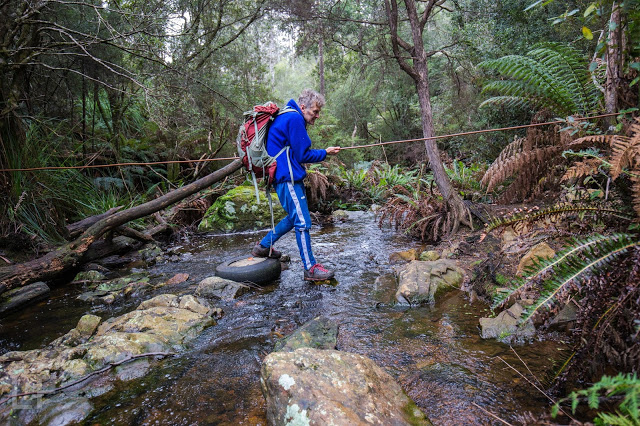
We had parked our car at the second forest entrance, and so finished with this creek crossing (over the Castra Rivulet) to end a perfect walk. (If you park at the first one, then this is about two minutes from the start).
Our route. Hopefully you can see that there is a main circuit, with Falls off to the side, usually involving a climb down. Tasmaps, being their usual inefficient selves, have not only omitted the path, but have misnamed and misplaced the position of the falls in their habitual cavalier attitude to the needs of walkers and tourists who might want to use the maps for something purposeful. I have blocked out the incorrect names. We walked anti-clockwise. The narrative (combined with map reading) should make it clear which falls are which. Step Falls are correctly named and placed.
Just for fun, here is a graph of our altitude. Did I happen to mention there was a bit of up and down? Nice workout for the legs.
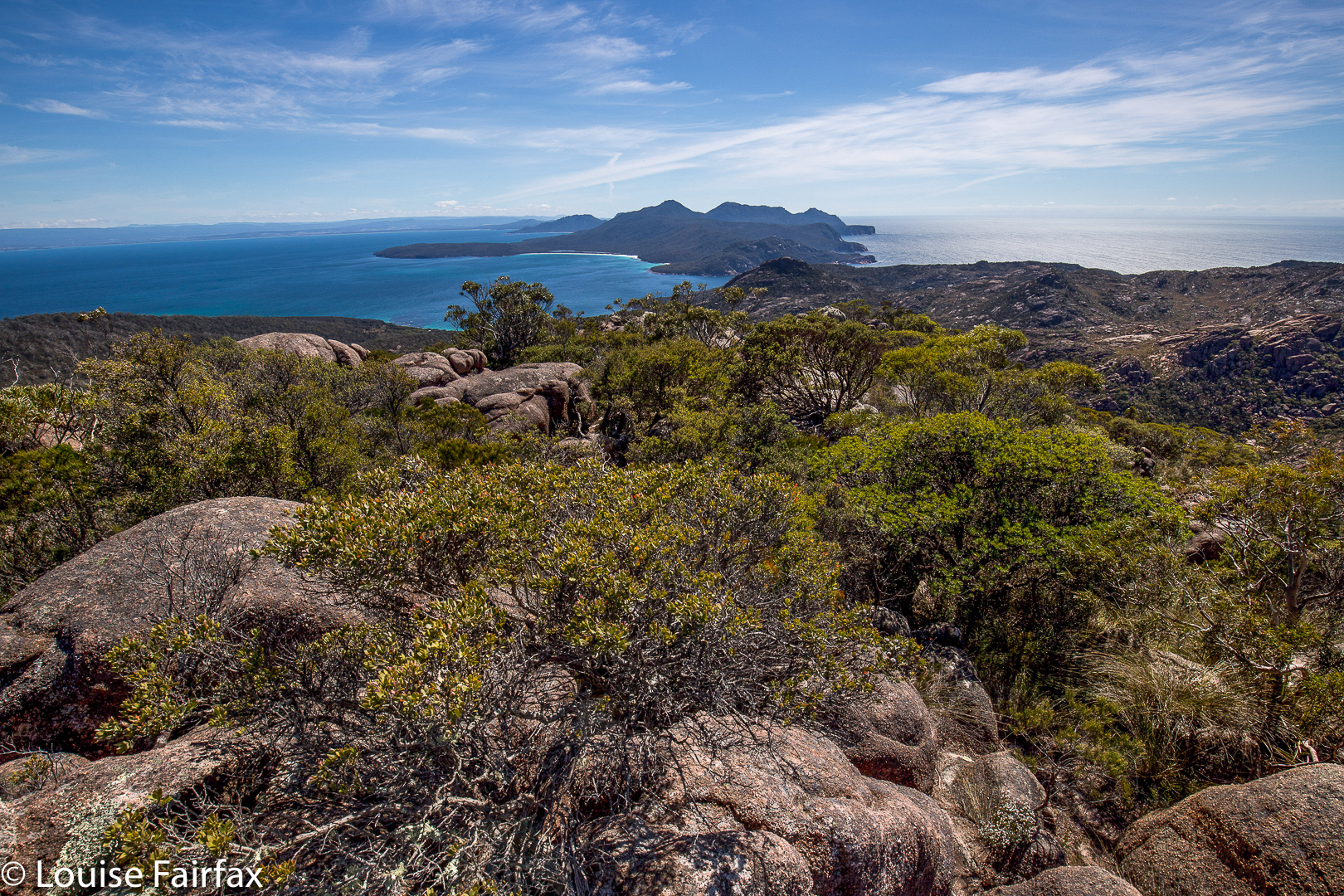
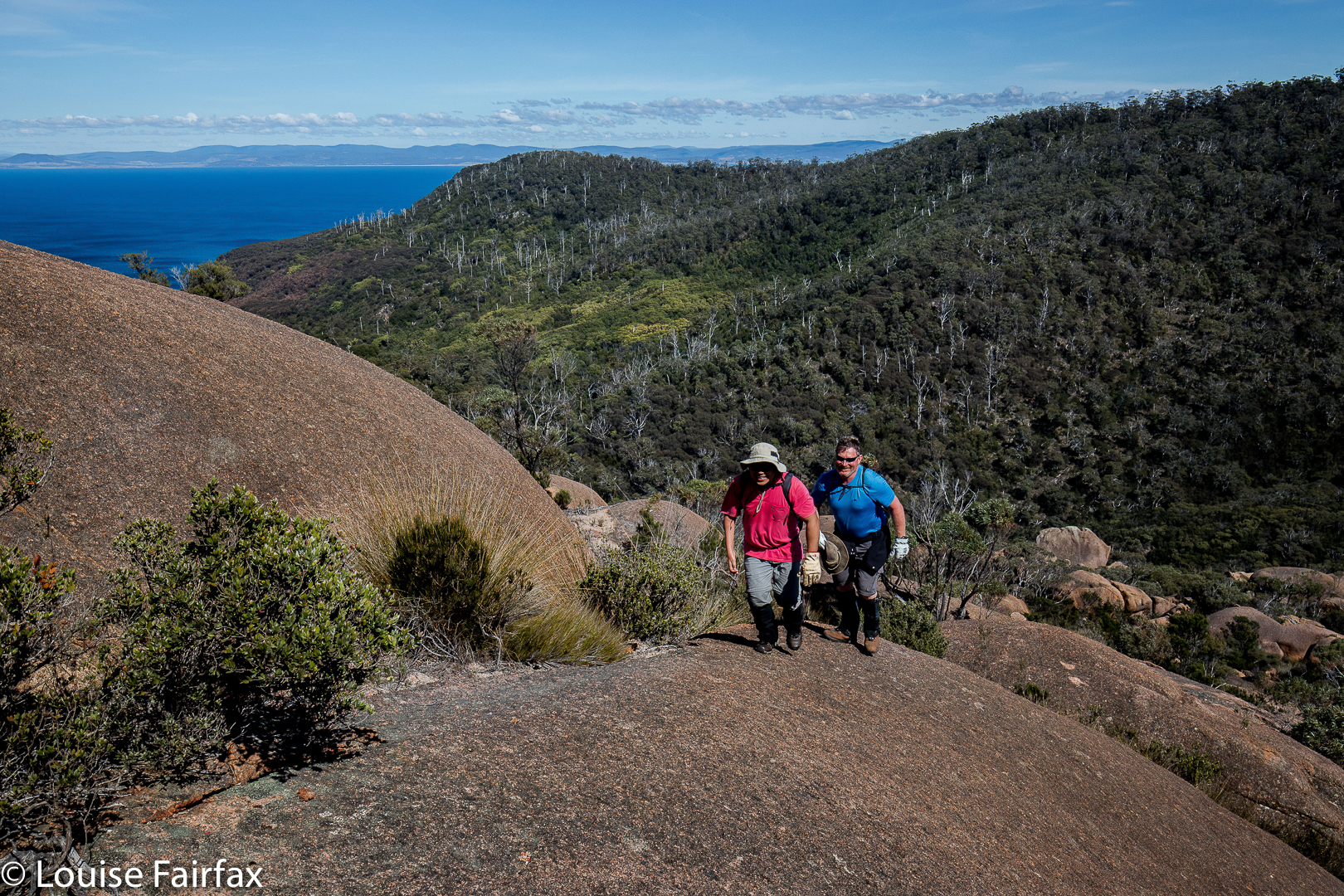 If you compare the photos of this mountain worth points and Bear Hill, worth none, you’ll see that getting no points is more photographically pleasing on this occasion.
If you compare the photos of this mountain worth points and Bear Hill, worth none, you’ll see that getting no points is more photographically pleasing on this occasion.